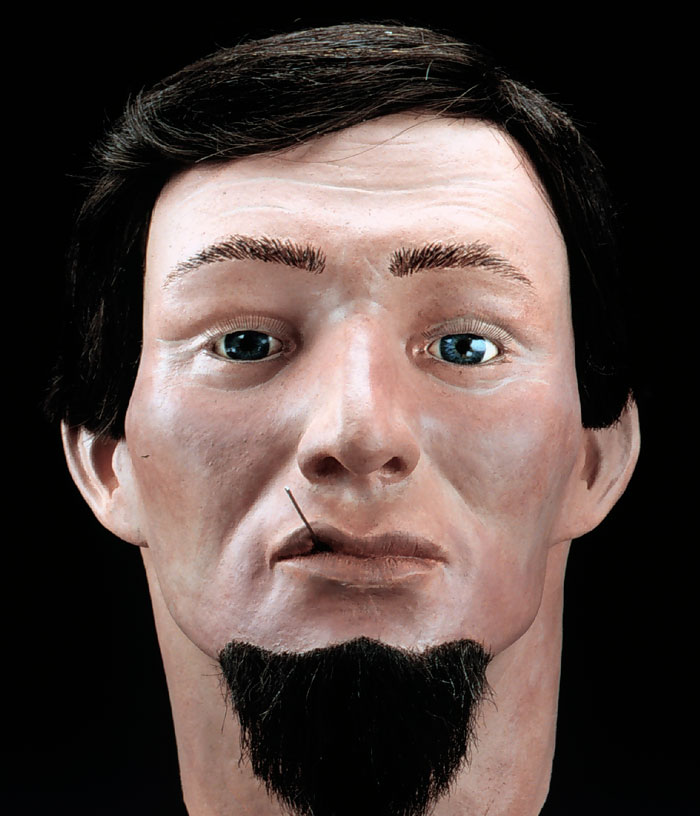The myth that the H. L. Hunley crewmembers were small in stature so that they could squeeze into such a tiny vessel was shattered by Frank Collins. Collins was a towering figure, even for today’s standards, measuring over 6 feet in height. The largest and possibly the strongest crewmember onboard, he volunteered to man the third crank of the Hunley, an experimental underwater vessel that would become the world’s first successful combat submarine.
Dr. Doug Owsley, forensic expert with the Smithsonian Institution, said, “Collins was the largest man among the Hunley crew. He rarely used tobacco, if at all, and unlike some of his crewmates who have worn notches in their teeth from pipes, he has ‘tailor notches,’ which means he used his teeth in activities involving metal needles.”
Born in Virginia, Collins mother died when he was a young boy. After her death, Frank and his brother John were raised by their grandparents in Fredericksburg. Little is known about Collins’ teenage years, but when he was approximately 20 years old, the 1860 census listed him simply as “day laborer,” with no specific profession or vocation. Linda Abrams, forensic genealogist researching the Hunley crew, said, “Both his grandfather and uncle were cobblers, so he may have apprenticed in their shop.”
In 1861, Collins’ grandfather died. At that point the young “day laborer” probably ended up in the role of providing for the family since he was the oldest child.
When the War began, Fredericksburg was on the frontlines of the battle. Whether drawn to the cause of battle or to provide for his family, Collins decided to get involved. He joined the Confederate States Navy, and was listed as a seaman, a classification that suggests he had some experience in the open ocean prior to the War.
Maria Jacobsen, Senior Archaeologist on the Hunley project, said, “Collins classification in the Confederate Navy is very interesting. He is a day laborer in 1860 and a seaman in 1863. Where has he gotten his experience at sea? Perhaps he turned to the sea to make a living after the death of his grandfather.”
Collins, like four other Hunley crewmembers, was assigned to the CSS Indian Chief in Charleston, South Carolina. Dixon handpicked four other volunteers for the Hunley crew from the Indian Chief.
Positioned in the middle of the vessel, Collins life was at great risk in case an emergency required quick evacuation through the forward or aft conning towers.
“I have spent long hours excavating inside the submarine, and it is difficult for me to imagine someone Collins’ size operating the crank. That he sat in the most dangerous position, a fact he would have known, to me shows tremendous courage,” Jacobsen said.


